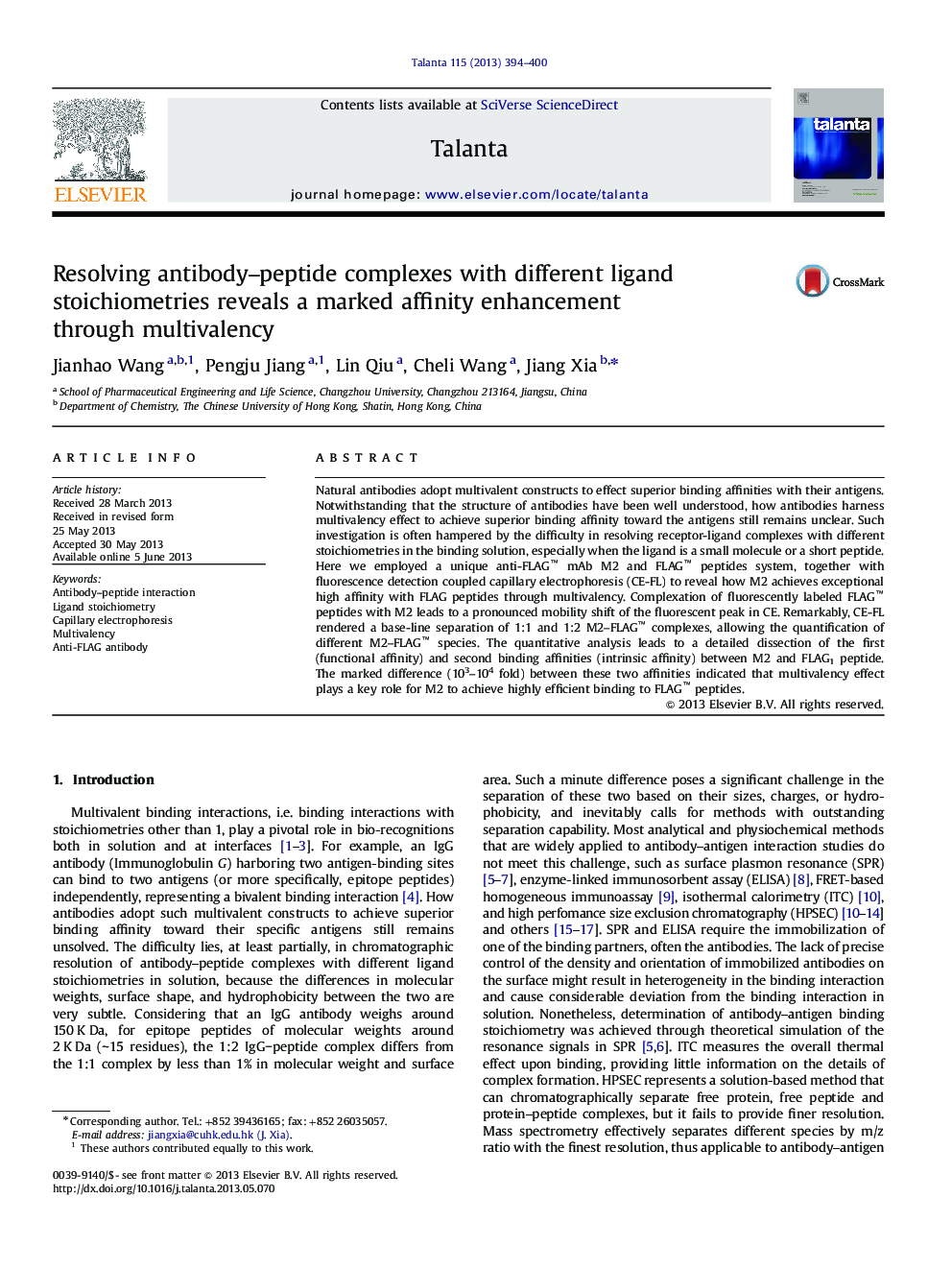| Article ID | Journal | Published Year | Pages | File Type |
|---|---|---|---|---|
| 7682478 | Talanta | 2013 | 7 Pages |
Abstract
Natural antibodies adopt multivalent constructs to effect superior binding affinities with their antigens. Notwithstanding that the structure of antibodies have been well understood, how antibodies harness multivalency effect to achieve superior binding affinity toward the antigens still remains unclear. Such investigation is often hampered by the difficulty in resolving receptor-ligand complexes with different stoichiometries in the binding solution, especially when the ligand is a small molecule or a short peptide. Here we employed a unique anti-FLAG⢠mAb M2 and FLAG⢠peptides system, together with fluorescence detection coupled capillary electrophoresis (CE-FL) to reveal how M2 achieves exceptional high affinity with FLAG peptides through multivalency. Complexation of fluorescently labeled FLAG⢠peptides with M2 leads to a pronounced mobility shift of the fluorescent peak in CE. Remarkably, CE-FL rendered a base-line separation of 1:1 and 1:2 M2-FLAG⢠complexes, allowing the quantification of different M2-FLAG⢠species. The quantitative analysis leads to a detailed dissection of the first (functional affinity) and second binding affinities (intrinsic affinity) between M2 and FLAG1 peptide. The marked difference (103-104 fold) between these two affinities indicated that multivalency effect plays a key role for M2 to achieve highly efficient binding to FLAG⢠peptides.
Related Topics
Physical Sciences and Engineering
Chemistry
Analytical Chemistry
Authors
Jianhao Wang, Pengju Jiang, Lin Qiu, Cheli Wang, Jiang Xia,
